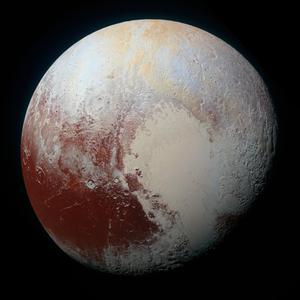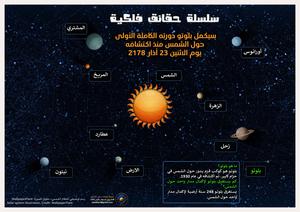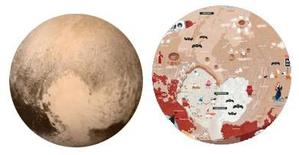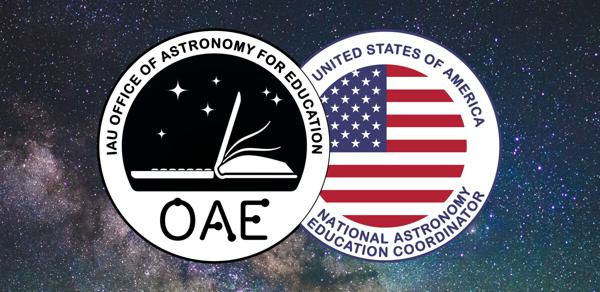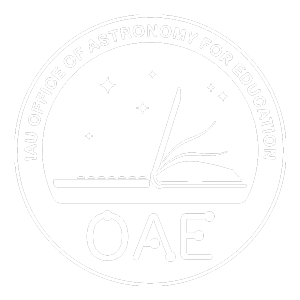Glossarbegriffe: Pluto
Description: Pluto ist einer der Himmelskörper in unserem Sonnensystem. Er befindet sich im Kuiper-Gürtel jenseits der Umlaufbahn des Neptun. Früher war Pluto als neunter Planet des Sonnensystems bekannt, aber 2006 wurde er der Kategorie Zwergplanet zugeordnet. Entdeckt wurde er 1930 von Clyde Tombaugh. Plutos durchschnittliche Entfernung von der Sonne beträgt 6 Milliarden Kilometer (km), und sein Radius ist 1185 km (kleiner als der des Erdmondes). Ein Jahr auf Pluto entspricht 247,9 Erdjahren und sein Tag entspricht 6,4 Erdtagen.
Die NASA-Mission New Horizon war die erste Raumsonde, die 2015 an Pluto vorbeiflog. Sie lieferte den ersten genauen Blick auf seine Oberfläche und seine Atmosphäre. Die Oberfläche des Pluto ist so kalt, dass nur sehr wenig Wasserstoff in gasförmiger Form existieren kann. Das bisschen Atmosphäre, das Pluto hat, besteht hauptsächlich aus Stickstoff. Auf der Oberfläche befinden sich große Ebenen aus gefrorenem Stickstoff. Seine Atmosphäre erstreckt sich bis zu einer Entfernung von 1600 km. Pluto besteht zu 70 % aus Gestein und zu 30 % aus Eis. Er hat fünf bekannte Monde: Charon, Styx, Nix, Kerberos und Hydra.
Zugehörige Glossarbegriffe:
See this term in other languages
Term and definition status: The original definition of this term in English have been approved by a research astronomer and a teacher The translation of this term and its definition is still awaiting approval
The OAE Multilingual Glossary is a project of the IAU Office of Astronomy for Education (OAE) in collaboration with the IAU Office of Astronomy Outreach (OAO). The terms and definitions were chosen, written and reviewed by a collective effort from the OAE, the OAE Centers and Nodes, the OAE National Astronomy Education Coordinators (NAECs) and other volunteers. You can find a full list of credits here. All glossary terms and their definitions are released under a Creative Commons CC BY-4.0 license and should be credited to "IAU OAE".
If you notice a factual or translation error in this glossary term or definition then please get in touch.
Zugehörige Medien
Pluto
Bildnachweis: NASA/Johns Hopkins University Applied Physics Laboratory/Southwest Research Institute credit link
License: PD Public Domain icons
Pluto: The Long Journey Around the Sun
Bildnachweis: Ali Al-Edhari
License: CC-BY-4.0 Creative Commons Namensnennung 4.0 International (CC BY 4.0) icons
Related Activities
Children's Planetary Maps: Pluto & Charon
astroEDU educational activity (links to astroEDU website) Description: Learn about our furthest neighbors
License: CC-BY-4.0 Creative Commons Namensnennung 4.0 International (CC BY 4.0) icons
Tags:
Maps
, Planetary cartography
, Spatial thinking
, Charon
Age Ranges:
6-8
, 8-10
, 10-12
, 12-14
Education Level:
Middle School
, Primary
, Secondary
Areas of Learning:
Social Research
Costs:
Low Cost
Duration:
2 hours
Group Size:
Group
Skills:
Analysing and interpreting data
, Asking questions
, Communicating information
, Constructing explanations
, Developing and using models
, Engaging in argument from evidence
, Planning and carrying out investigations
